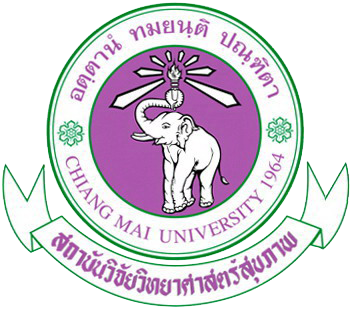Study name : A Phase III randomized controlled trial to evaluate the efficacy of drug treatment in prevention of HIV infection and death among opiate dependent injectors
Research network (Code) : HPTN 058
Principle investigator : Apinun Aramrattana, MD, PhD,
David Celentano, ScD, MHS,
Co-PI at Thai site : Thira Sirisanthana MD, Manit Srisurapanont MD
Collaborators :
– University of Pennsylvania
– John Hopkins University
– Family Health International
– Reckitt Benckiser Pharmaceuticals, Inc.
– The Statistical Center for HIV/AIDS Research & Prevention
Funding agency :
– Division of AIDS, US National Institute of Allergy and Infection Diseases (NIAID)
– US National Institute on Drug Abuse
– US National Institute of Mental Health
– US National Institute of Health (NIH)
Study sites : Thailand (Chiang Mai)
China (Guangxi and Xinjiang)
Study design : Phase III, two-arm, randomized, open-label, controlled, multi-center trial.
Study Population : HIV seronegative injection drug users who are dependent on opiates
Study Size : Approximately 1500 opiate dependent injection drug users
Study Duration : The total duration of the study will be approximately four and a half years. The initial safety and feasibility phase will take approximately 30 weeks at each site, with 26 weeks to enroll the targeted 50 participants plus four weeks to complete the last safety phase visit. The accrual period in the full study will be approximately 104 weeks following the safety and feasibility phase. Participants will be followed for a minimum of 104 weeks and a maximum of 156 weeks, depending on when they are enrolled. Behavioral and serologic assessments will take place at baseline and at 26 week intervals throughout the follow-up period.
Study start : 30 May 2007 (Enrollment)
Study objectives :
The primary objective of the study is to determine whether 52 weeks of substitution BUP/NX and counseling treatment in opiate addicted participants will achieve a long term (104 weeks) reduction in cumulative HIV incidence and death compared to short-term BUP/NX detoxification and counseling.
The secondary objectives of the study are:
1. To determine if the substitution treatment reduces average HIV incidence and death compared to the detoxification arm; and reduces HIV incidence and death at 52 weeks and 156 weeks.
2. To determine if substitution treatment decreases average HIV incidence compared to detoxification treatment; and HIV incidence at 52, 104, and 156 weeks.
3. To compare the average rates of death in the two arms; and the rates of death at 52, 104, and 156 weeks.
4. To compare the self-reported frequency of injection, drug and sex-related HIV risk behaviors in the two study arms.
5. To compare the frequency of drug use measured by self-report and urinalysis in the two arms.
Significance :
This is a large scale clinical trial to assess roles of buprenorphine/naloxone substitution in reducing potential harms, death and HIV sero-conversion, among opiates injectors in East and Southeast Asia.
Progression :
The enrollment target of 202 participants for Chiang Mai site has been reached in October 6th, 2009. The retention rates for 26, 52, 78, 104 and 130, at April 25th, 2010, are 94, 92, 86, 88 and 100 % respectively.
Interesting findings :
The participants have been from rural areas far away from Chiang Mai city. To improve the accessibility leading to improvement of recruitment and retention rates, the site have developed 3 mobile strategies i.e. mobile screening, mobile dispensing and mobile follow-up. All 3 procedures have been approved by DAIDS and in operation under the HPTN regulation. Recruitment rates before and after the mobile screening suggest some positive impacts. Mobile dispensing services offer flexible dispensing and counselling choices for remote participants. This also helps improving retention rates.




